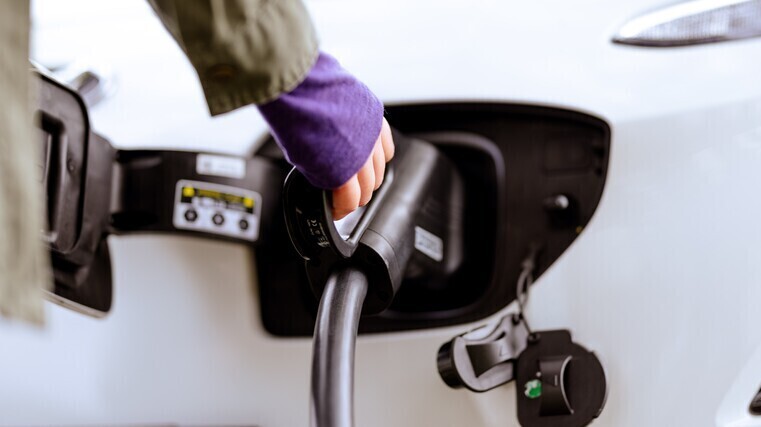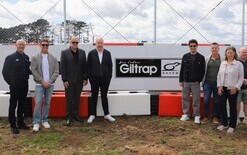Debate over emissions budgets

The government says New Zealand will still meet its initial target for cutting transport emissions without discounts for consumers when electric vehicles (EVs) are registered for the first time in this country.
The Minister of Transport has received advice from officials on the climate impacts of the coalition’s decision to scrap the clean car discount (CCD).
Simeon Brown says it shows axeing EV payments will not result in New Zealand missing its first carbon budget, which runs from 2022-25, although he has yet to share what the advice states will happen beyond that, reports Radio NZ.
Other climate-related reports and briefings suggest the government’s approach could impact on budgets after 2025 unless the cabinet comes up with substantial replacements for scrapping EV incentives, ditching subsidies for companies switching from coal boilers and delaying pricing on farm emissions.
New Zealand has three budgets capping its greenhouse gases (GHGs) running from 2022-25, 2026-30 and 2031-35. Each period sees reductions get steeper.
The Climate Change Commission warned last week that seemingly small delays during the first budget could result in major impacts on the second and third periods, reports RNZ.
The uptake of EVs during the rest of this decade, for example, could make or break New Zealand’s ability to meet its 2030-35 transport targets, it adds.
In the biennial emissions report, officials made a forward-looking snapshot of how much they thought policies in 2022 would impact emissions.
In 2025, policies already in place in 2022 would save the country 4.2 million tonnes of emissions a year, they estimated. By 2030, the impact of those same policies, if left unchanged, would more than double to 10.1m tonnes.
The commission will release a stocktake of progress, but not until mid-2024. In the meantime, the government has access to official briefings on the way forward.
CCD effect on emissions
Transport was already in danger of struggling to make much contribution to reducing emissions in the short term after the previous government scrapped an obligation to use biofuels, reports RNZ.
Ditching the biofuel mandate was welcomed by some environmental groups, which feared unintended consequences, but it left no reliable, quick option for carbon savings from transport.
The new government has decided to drop EV subsidies and told councils to pull back from exploring walking and cycling projects.
As for the size of the transport hole, a report by Concept Consulting for Drive Electric states repealing the CCD will reduce EV uptake enough to boost emissions by 900,000 tonnes by 2030 when compared to keeping the policy. The government rejects that.
However, it’s during the post-2030 emission budget – not the first or second one – when Aotearoa is most likely to feel the impacts of losing momentum on EVs now, according to last week’s advice from the Climate Change Commission.
It states: “The large jump in emissions reductions expected from transport in the third emissions budget [2031-35] relies on a rapid scaling-up of EV sales in the 2020s.
“Without that early scaling-up, a higher-emissions vehicle fleet will be locked in making the necessary emissions reductions from transport more costly and disruptive.”
The previous government’s package of transport policies – detailed in its emissions plan of May 2022 – also includes the clean car standard for lowering tailpipe emissions on fresh imports, working to reduce pollution from large trucks and freight, and boosting cycling, walking and public transport.
Altogether, those initiatives were estimated to save 1.7-1.9m tonnes of emissions in the budget period to 2025 with potentially much bigger impacts during the decade after that.
But with the biofuels mandate now scrapped by Labour, the CCD ending on December 31, and a push towards walking and cycling on pause, those savings are in question.
The previous government had a target for reducing private car travel by making foot and bike travel easier, but Brown has instructed councils to halt work on proposals to boost walking and cycling.
He told RNZ on December 19 the work in question wasn’t at the construction stage, but “just simply writing reports, councils writing endless reports” on how to reduce the distance travelled using private vehicles.
Emissions budgets
New Zealand’s first two emissions budgets covering 2022-25 and 2026-30 are building blocks for meeting its international climate pledge under the Paris Agreement.
Failing to meet the budgets means paying more for offshore credits, while beating them would save on spending money overseas.
Under the Paris Agreement, the government has promised to reduce about 150m tonnes off normal GHG levels from 2021-30. That equates to around two years of emissions, reports RNZ.
The agreement requires countries to make their best efforts compatible with keeping the planet under 1.5C-2C. New Zealand’s target was set knowing there was almost no chance of making what the government of the day considered a respectable contribution to the climate effort just by making savings in New Zealand.
Instead, the plan was to make around 50m tonnes of savings here, which was the most the Climate Change Commission thought realistic.
The other 100m tonnes were to be purchased from overseas, likely from Asia-Pacific countries, in the form of renewable energy or other projects. That will cost a minimum $3 billion from the public purse.
However, those proportions are not set in stone. Cabinet papers published in July 2023 show the previous government wanted to try to beat the next emissions budget in order to spend less overseas.
Cabinet asked government departments to prepare options for undershooting the 2026-30 emissions cap using activities such as planting native forests. Those plans were in their infancy and were subject to feasibility checks.
Simon Watts, who is the new Minister for Climate Change, made upbeat comments before the general election about doing more inside New Zealand and spending less offshore. As things stand, reports RNZ, even meeting the budgets is looking difficult let alone beating them.
When it comes to meeting New Zealand’s international target, the years from 2026-30 will be critical. With cuts having started slowly during 2022-25, the five years after that are something of a catch-up period.
The Climate Change Commission calculates 43m tonnes savings are needed in this country in the five years to 2030 to stay inside the emissions budget. Last week, it told the government it was heading to be about 20m tonnes short.
Existing policies put New Zealand on-track to make around 23m in savings, while “planned” but not yet implemented measures could have saved another 14m and possibly shrinking the gap to around 7m.
However, that assessment was based on policies in place before the election, several of which have been ditched, delayed or questioned. The new government has promised it will not walk away from the budget, meaning it now has a gap to fill.
Click here to read RNZ’s full report, which also covers farming and burning coal and gas for energy.
Call to scrap commission
As for the Climate Change Commission, apparently New Zealand doesn’t need it. Or that’s according to the Act party.
In a press release dated December 13, Simon Court, as the party’s spokesman for climate change, says: “The last thing we need from the commission is a rehash of the same meddling advice it gave the previous government.
“Micro-interventions demanded by the commission, from cycleway projects to restricting gas stoves, reads like an attempt to distract elected officials from the most effective tool we have to manage emissions – the ETS.
“Meanwhile, the commission continues to ignore the difference between methane from farms and other types of emissions. Behaviour like this is exactly why Act called for the scrapping of the commission in our alternative budget. It’s costly taxpayer-funded lobbying and it needs to stop.
“Act continues to promote scrapping Jacinda Ardern and James Shaw’s emissions targets, and promotes simple measures centred around the ETS to minimise climate costs for families and businesses.”





